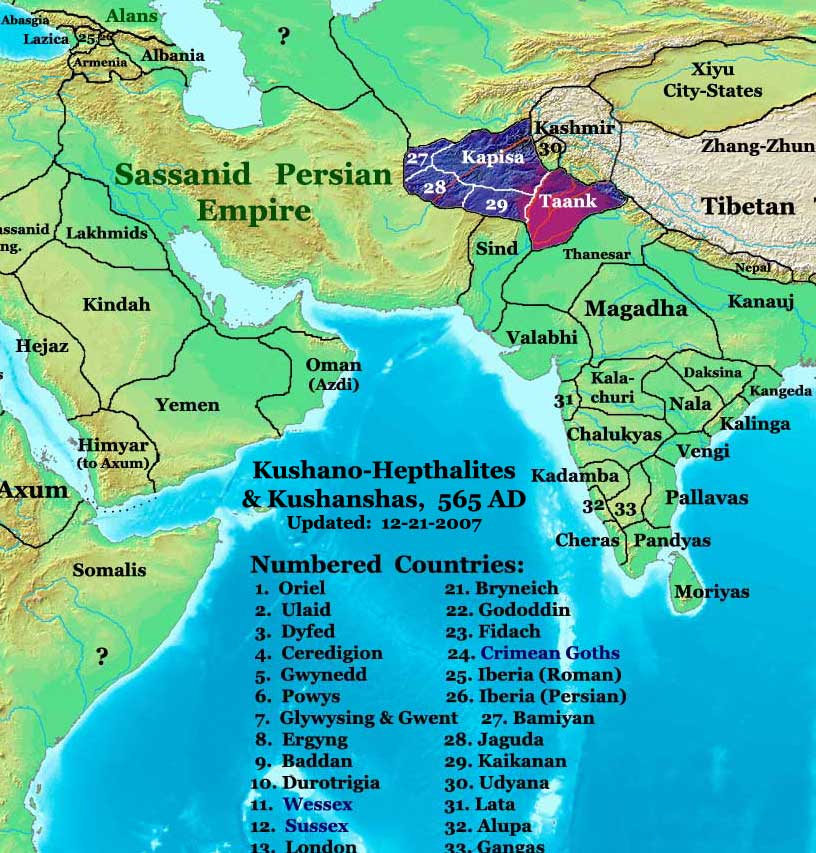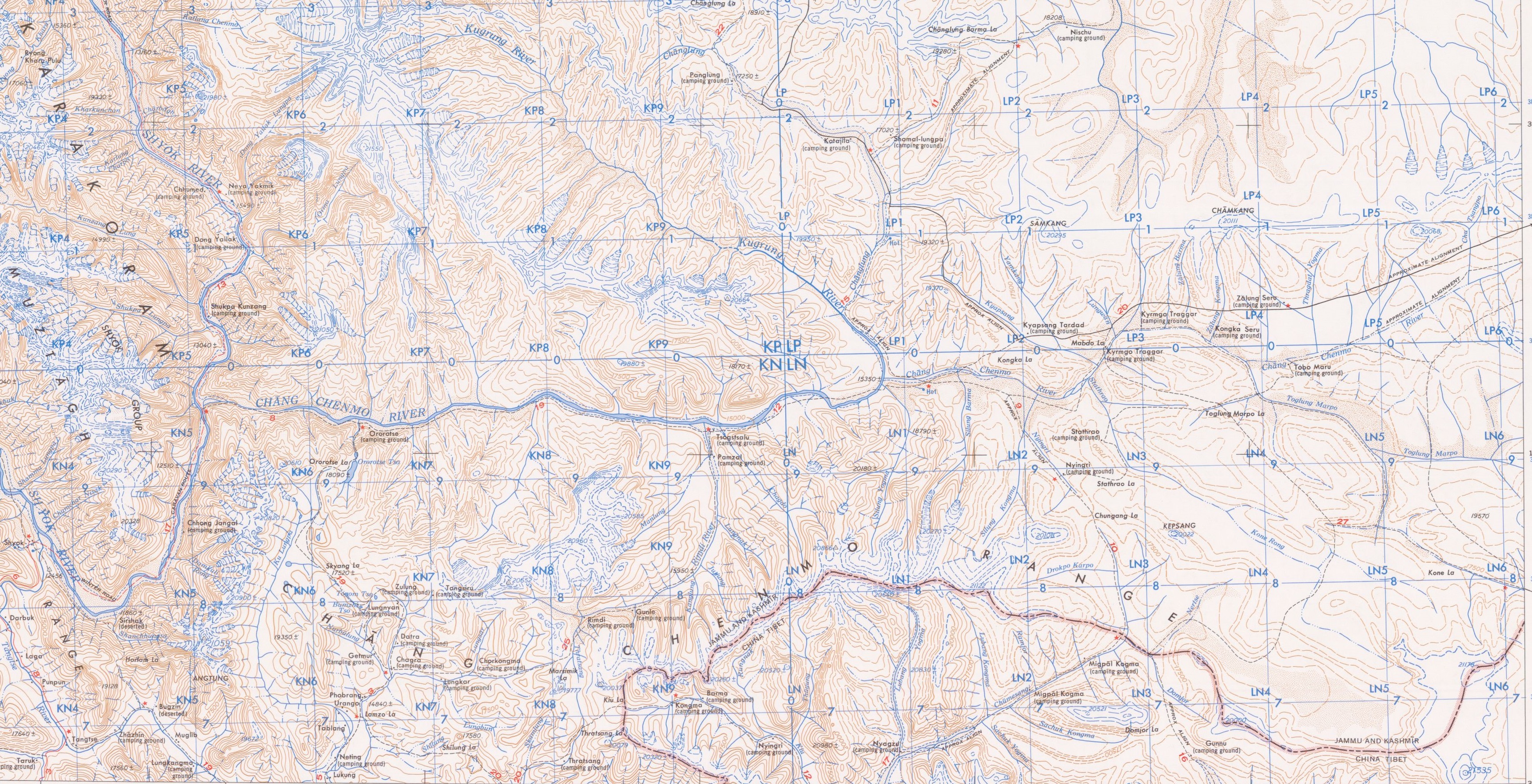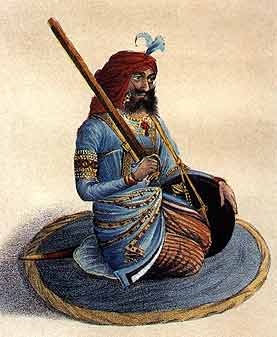|
Hot Springs, Chang Chenmo Valley
__NOTOC__ Hot Springs (traditional name: Kyam) is a campsite and the location of an Indian border outpost in the Chang Chenmo River valley in Ladakh near the disputed border with China. It is so named because there is a hot spring at this location. The Line of Actual Control near Kongka Pass is only to the east. Name Historically, the name for the hot spring was ''Kyam'' (''Kiam'', ''Kayam''). The Chinese still refer to it by this name. Geography Geologist Frederic Drew states that the Chang Chenmo river flows on a barren gravel bed, with occasional alluvial patches where vegetation is found. Hot Springs is one such location. In the vicinity are also other such patches, named Pamzal, Tsogtsalu (or ''Tsolu'') and Gogra. They were historical halting places for travellers and trading caravans, with a supply of water, fuel and fodder. Nomadic Ladakhi graziers also used them for grazing cattle. A large tributary called Kugrang joins the Chang Chenmo River near Hot Springs. ... [...More Info...] [...Related Items...] OR: [Wikipedia] [Google] [Baidu] |
Ladakh
Ladakh () is a region administered by India as a union territory which constitutes a part of the larger Kashmir region and has been the subject of dispute between India, Pakistan, and China since 1947. (subscription required) Quote: "Jammu and Kashmir, state of India, located in the northern part of the Indian subcontinent in the vicinity of the Karakoram and westernmost Himalayan mountain ranges. From 1947 to 2019, Ladakh was part of the Indian state of Jammu and Kashmir, which has been the subject of dispute between India, Pakistan, and China since the partition of the subcontinent in 1947." Quote: "Jammu and Kashmir: Territory in northwestern India, subject to a dispute between India and Pakistan. It has borders with Pakistan and China." Ladakh is bordered by the Tibet Autonomous Region to the east, the Indian state of Himachal Pradesh to the south, both the Indian-administered union territory of Jammu and Kashmir (union territory), Jammu and Kashmir and the Pakistan-administ ... [...More Info...] [...Related Items...] OR: [Wikipedia] [Google] [Baidu] |
Changlung River
__NOTOC__ Gogra (also referred to as Nala Junction) is a pasture and campsite in the Ladakh union territory of India, near its disputed border with China. It is located in the Kugrang River valley, a branch valley of Chang Chenmo Valley, where the Changlung River flows into Kugrang. During the times of the British Raj, Gogra was a halting spot for travellers to Central Asia via the 'Chang Chenmo route', who proceeded through the Changlung river valley and the Aksai Chin plateau. In the late 1950s, China began to claim the Changlung river valley as its own territory. Clashes occurred here during the 1962 Sino-Indian War. During the 2020–2022 skirmishes, the area around Gogra was again a scene of conflict, and continues to be a subject of active dispute between the two countries. Geography The Chang Chenmo ("Great Northern") Valley lies in a depression between the Karakoram Range in the north and the Chang Chenmo Range in the south. The Changchenmo river flows through ... [...More Info...] [...Related Items...] OR: [Wikipedia] [Google] [Baidu] |
Hot Springs, Changlung Valley
__NOTOC__ Gogra (also referred to as Nala Junction) is a pasture and campsite in the Ladakh union territory of India, near its disputed border with China. It is located in the Kugrang River valley, a branch valley of Chang Chenmo Valley, where the Changlung River flows into Kugrang. During the times of the British Raj, Gogra was a halting spot for travellers to Central Asia via the 'Chang Chenmo route', who proceeded through the Changlung river valley and the Aksai Chin plateau. In the late 1950s, China began to claim the Changlung river valley as its own territory. Clashes occurred here during the 1962 Sino-Indian War. During the 2020–2022 skirmishes, the area around Gogra was again a scene of conflict, and continues to be a subject of active dispute between the two countries. Geography The Chang Chenmo ("Great Northern") Valley lies in a depression between the Karakoram Range in the north and the Chang Chenmo Range in the south. The Changchenmo river flows through t ... [...More Info...] [...Related Items...] OR: [Wikipedia] [Google] [Baidu] |
Law Enforcement In India
Law of India, Indian law is enforced by a number of Law enforcement agency, agencies. Unlike many federation, federal nations, the constitution of India delegates the maintenance of law and order primarily to the States and union territories of India, states and territories. At the Government of India, federal level, some of India's Paramilitary forces of India, paramilitary forces are part of the Ministry of Home Affairs (India), Ministry of Home Affairs and support the states. Larger cities have police forces under their respective state police. All senior officers in the state police forces and federal agencies are members of the Indian Police Service (IPS). Central agencies The central agencies are controlled by the Government of India, central government. Most federal law-enforcement agencies are under the Ministry of Home Affairs (India), Ministry of Home Affairs. The head of each agency is an IPS officer. The constitution assigns responsibility for maintaining law and ... [...More Info...] [...Related Items...] OR: [Wikipedia] [Google] [Baidu] |
Claude Arpi
Claude Arpi is French-born author, journalist, historian and tibetologist born in 1949 in Angoulême who lives in Auroville, India. He is the author of several books including ''The Fate of Tibet: When Big Insects Eat Small Insects'', and several articles on Tibet, China, India and Indo-French relations. Claude Arpi is the director of the Pavilion of Tibetan Culture at Auroville. The 14th Dalai Lama The 14th Dalai Lama (spiritual name Jetsun Jamphel Ngawang Lobsang Yeshe Tenzin Gyatso, known as Tenzin Gyatso (Tibetan: བསྟན་འཛིན་རྒྱ་མཚོ་, Wylie: ''bsTan-'dzin rgya-mtsho''); né Lhamo Thondup), known as ... inaugurated the Pavilion, with Claude Arpi in attendance, on 20 January 2009. Bibliography India–Tibet Relations (1947–1962) series: *''Tibet: When the Gods Spoke. India Tibet Relations (1947–1962), Part 3'', Vij Books, 2019. *''Will Tibet Ever Find Her Soul Again? India Tibet Relations (1947–1962), Part 2'', Vij Books, 20 ... [...More Info...] [...Related Items...] OR: [Wikipedia] [Google] [Baidu] |
People's Liberation Army
The People's Liberation Army (PLA) is the principal military force of the People's Republic of China and the armed wing of the Chinese Communist Party (CCP). The PLA consists of five service branches: the Ground Force, Navy, Air Force, Rocket Force, and Strategic Support Force. It is under the leadership of the Central Military Commission (CMC) with its chairman as commander-in-chief. The PLA can trace its origins during the Republican Era to the left-wing units of the National Revolutionary Army (NRA) of the Kuomintang (KMT) when they broke away on 1 August 1927 in an uprising against the nationalist government as the Chinese Red Army before being reintegrated into the NRA as units of New Fourth Army and Eighth Route Army during the Second Sino-Japanese War. The two NRA communist units were reconstituted into the PLA on 10 October 1947. Today, the majority of military units around the country are assigned to one of five theater commands by geographical location. ... [...More Info...] [...Related Items...] OR: [Wikipedia] [Google] [Baidu] |
Indo-Tibetan Border Police
The Indo-Tibetan Border Police (ITBP) is a border patrol organization of India deployed along its borders with Tibet Autonomous Region. It is one of the seven Central Armed Police Forces, established in 1962 in the aftermath of the Sino-Indian War of 1962. In September 1996, the Parliament of India enacted the "Indo-Tibetan Border Police Force Act, 1992" to "provide for the constitution and regulation" of the ITBP "for ensuring the security of the borders of India and for matters connected therewith". The first head of the ITBP, designated Inspector General, was Balbir Singh, a police officer previously belonging to the Intelligence Bureau. The ITBP, which started with 4 battalions, has, since restructuring in 1978, undergone expansion to a force of 60 Battalions with 15 Sectors and 05 Frontiers as of 2018 with a sanctioned strength of 89,432. The ITBP is trained in the Civil Medical Camp, disaster management, and nuclear, biological and chemical disasters. ITBP personnel ... [...More Info...] [...Related Items...] OR: [Wikipedia] [Google] [Baidu] |
Central Reserve Police Force
The Central Reserve Police Force (CRPF) is a federal police organisation in India under the authority of the Ministry of Home Affairs (MHA) of the Government of India. It is one among the Central Armed Police Forces. The CRPF's primary role lies in assisting the State/Union Territories in police operations to maintain law and order and counter-insurgency. It is composed of Central Reserve Police Force ( Regular) and Central Reserve Police Force (Auxiliary). It came into existence as the Crown Representative's Police on 27 July 1939. After Indian independence, it became the Central Reserve Police Force on enactment of the CRPF Act on 28 December 1949. Besides law and order and counter-insurgency duties, the CRPF has played an increasingly large role in India's general elections. This is especially true for the erstwhile state of Jammu and Kashmir, Bihar and in the North East, with the presence of unrest and often violent conflict. During the Parliamentary elections of Septemb ... [...More Info...] [...Related Items...] OR: [Wikipedia] [Google] [Baidu] |
Kongka Pass Incident
The Kongka Pass or Kongka La () is a low mountain pass on the Line of Actual Control between India and China in eastern Ladakh. It lies on a spur of the Karakoram range that intrudes into the Chang Chenmo Valley adjacent to the disputed Aksai Chin region. China claimed the location as its border in a 1956 map, and attacked an Indian patrol party in 1959 killing ten policemen and apprehending ten others. Known as the Kongka Pass incident, the event was a milestone in the escalation of the border dispute between the two countries. Name In the Ladakhi language, Kongka () means a "low pass or ridge, high point or rise of a plateau". In the first reference we have of this pass, it was called "Salmu Kongka" and explained as a "small pass". : Describing the route from Leh to Keriya: "Leaving hangchenmo valleyshortly after the Shahidulla road turns off to the left, it ascends to the plateau by a small pass (the Salmu Kongka); descending again into the valley and crossing the Changch ... [...More Info...] [...Related Items...] OR: [Wikipedia] [Google] [Baidu] |
The Navy And Army Illustrated
''The Navy and Army Illustrated'' was an illustrated glossy journal or magazine that covered historical and contemporary military matters from 1895 to 1915. First published in 1895 by George Newnes, ''The Navy and Army Illustrated'' described itself as 'A Magazine Descriptive and Illustrative of Everyday Life in the Defensive Services of the British Empire'. The first series, published between 1895 and 1903, was edited by Commander Charles Napier Robinson. Originally published fortnightly and priced at 6d, its publication was later increased to weekly. From 1903 it amalgamated with ''The King'',''The Navy and Army Illustrated'' - ... [...More Info...] [...Related Items...] OR: [Wikipedia] [Google] [Baidu] |
Ranbir Singh (Maharaja)
Ranbir Singh (August 1830 – 12 September 1885) was Maharaja of Jammu and Kashmir from 1856 until his death in 1885. Ranbir Singh was the third son of Gulab Singh, the founder of the Jammu and Kashmir state. Ranbir Singh ascended the throne in 1856 after Gulab Singh's abdication due to his poor health. Unlike European women and children, Indian mutineers were not allowed to take refuge in his state. He also sent his troops to help the British to besiege Delhi. He was subsequently rewarded for his behaviour during the mutiny. He went on to annex Gilgit which had previously witnessed a rebellion against the state. The princely states of Hunza and Nagar started paying tributes to Jammu and Kashmir during his reign. He also established a modern judicial system. Civil and criminal laws were compiled into the Ranbir Penal Code during his reign. Ranbir Singh was a scholar of Sanskrit and Persian languages and had many books translated. Early life Singh was born at Ramgarh, J ... [...More Info...] [...Related Items...] OR: [Wikipedia] [Google] [Baidu] |
Rudok
Rudok, also spelt Rutok and Rutog, more properly Rudok Dzong (), is a town that served as the historical capital of the Rudok area in Western Tibet on the frontier with Ladakh. In the 1911 Encyclopædia Britannica, it is described as being "picturesquely situated" on the side of a hill standing isolated in the plain near the east end of Lake Pangong. Initially part of Ladakh when the kingdom was founded in the 10th century, Rudok was separated from Ladakh after of the Tibet–Ladakh–Mughal War in 1684 and annexed to Central Tibet. Close economic relations between Ladakh and Rudok nevertheless continued until the Chinese annexation of Tibet in 1949. China discontinued trade between Ladakh and Rudok, and developed Rudok into a military base for prosecuting its border claims against Ladakh. Around the year 2000, the Chinese administration of Tibet built a new Rutog Town about 10 km east of Rudok, adjacent to the China National Highway 219, and moved the county headquarters ther ... [...More Info...] [...Related Items...] OR: [Wikipedia] [Google] [Baidu] |










